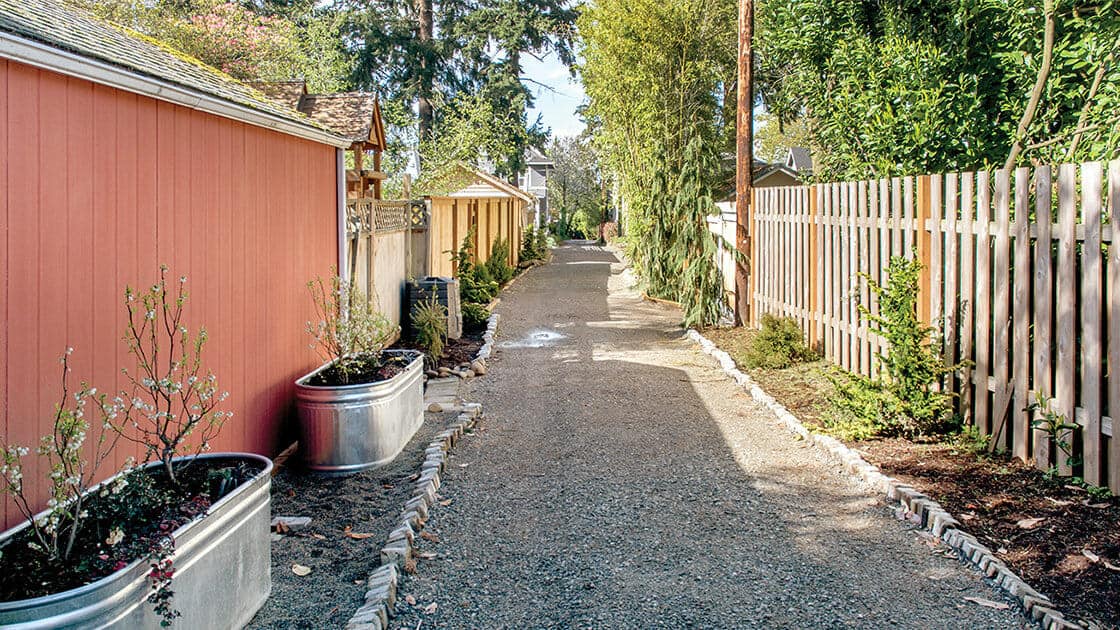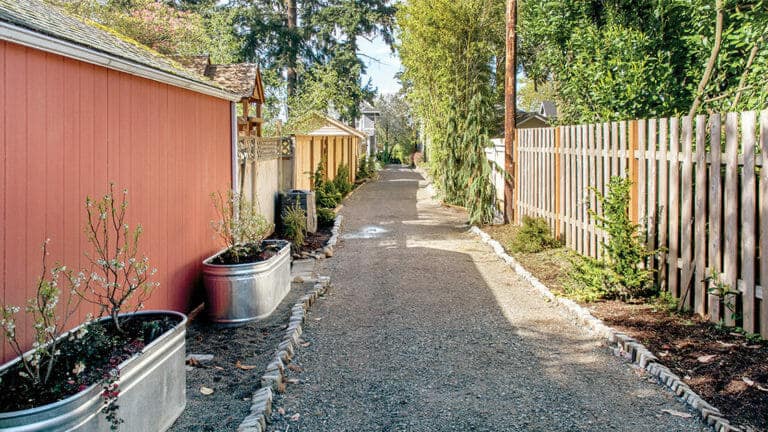Portland alley advocates estimate there are 76 miles of alleys in their city—all potential green public spaces. This northeast Portland neighborhood is one of many projects reclaiming forgotten concrete pathways for nature and people. Derek Dauphin
Rachel Schutz hated watching the kids play outside, and not because she was a curmudgeon. As director of an after-school program in a Latino neighborhood near Portland, Oregon, she likes the outdoors, the piney tang that hangs in the damp air.
But the kids’ shoes would thump on the asphalt, the pounding echoing against metal dumpsters along the alley. That was their play space. When a neighbor’s pine tree shed its needles, she watched the kids sweep them together and build them into a nest or fort. Otherwise, they were limited to games with chalk or a ball hoop.
The kids wanted something different for the Inukai Family Boys and Girls Club’s 5,000 square feet of alleyside space. They talked about a soccer field or a traditional playground—but surprised Schutz by choosing a nature park. They imagined dirt, logs, and boulders to climb on, raised beds to grow flowers and veggies, and hundreds of trees and plants throughout.
Schutz just had to figure out how to remove the pavement.
Doing so introduced her to a soften-our-cities movement in which cities such as Nashville, Tennessee, Montreal and Detroit are rethinking all that cement. Alleys and alleysides in particular are being effectively reimagined as people-friendly pathways, parks and lushly planted urban habitat.
Schutz and the kids she serves understand why the idea has been spreading. The day before they strong-armed the asphalt up, one girl asked her, “Miss Rachel, does this mean we get real grass we can touch?”
Some Things About Alleys
Practically every city’s got alleys, passageways behind or between buildings or homes. They can be wide or narrow, pedestrian-only or open to vehicles. They date back to medieval times in many world cities, where some still host commerce and neighborhood gatherings and others stay hushed.
U.S. city planners purposefully laid dirt alleys to accommodate horses and carriages. Garbage pickup was done there (and still is today). Alleys were improvised living areas […]
Full article, including flood-mitigation effects: How Removing Asphalt Is Softening Our Cities
More about pavement infrastructure and water:
San Francisco’s green-grey infrastructure
With Green Makeover, Philadelphia Tackles Its Stormwater Problem
Systemic Failure: Why 1 Million Californians Lack Safe Drinking Water



